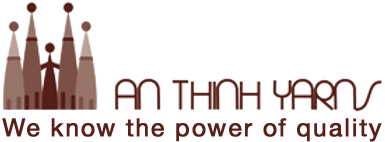What is non-woven fabric

Nonwoven fabric is a sheet or web-like structure bonded together, primarily composed of filament fibers. Through mechanical, thermal, and chemical processes, nonwoven fabric is formed as a flat, porous sheet made from individual fibers.
True to its name and characteristics, this fabric does not rely on conventional weaving or knitting methods to interlace fibers. Instead, it provides specific functionalities such as fire resistance, cushioning, filtration, thermal and sound insulation, and moderate elasticity. These properties make it highly suitable for bacterial filtration barriers.
What is Needle-Punched Nonwoven Fabric?
Needle-punched nonwoven fabric, commonly referred to in English as needle punched nonwoven fabric, shares similar properties with felt. It is typically produced in rolls or large sheets that are cut to size. The production of this fabric requires advanced technology and machinery to ensure superior quality.
Production Process of Needle-Punched Nonwoven Fabric
At An Thinh Yarns Company, quality is our top priority. We enforce strict product quality control, ensuring that every meter of fabric meets international standards. Below is an overview of our production process:
• Step 1: Fiber Preparation

– Inspect the cleanliness of the fiber handling area, prepare and check raw materials, and remove any impurities or substandard materials.
– Weigh the fibers according to the correct ratio and spread them evenly on the feed tray.
– Start the rolling machine and feed the fibers into the blending tank.
– Adjust the cutting blades to match the required product width.
• Step 2: Fabric Production

– Transfer fibers from the blending tank to the opener and carding unit.
– Arrange the fibers evenly and adjust the fabric width according to order specifications.
– Carry out the needle-punching process.
– Inspect fabric weight, width, surface, and color to ensure quality before proceeding to the thermal bonding stage.
– Adjust temperature and thickness to meet order specifications.
– Conduct a final quality check, and if any issues arise, report them immediately to the management team for corrections.
• Step 3: Cutting and Packaging

– Cut the fabric to the specified length and inspect the edges.
– Verify the weight accuracy, and if discrepancies occur, notify the management team for adjustments.
– For approved products, proceed with packaging using the correct roll size and customer requirements.
– Use paper cores for soft fabric rolls or as per customer requests.
– Check labeling accuracy, record product details, and apply labels.
Why Do Many Businesses Prefer Needle-Punched Nonwoven Fabric in Production?
With increasing global environmental awareness, people are prioritizing eco-friendly and health-safe products. One of the reasons nonwoven fabric is widely favored is its biodegradability. Once buried in natural soil, it decomposes over time, preventing pollution and posing no health risks.
The decomposition process of nonwoven fabric follows this timeline:
- Within two years, 60% of the product’s weight breaks down.
- Over 5-7 years, the material completely disintegrates.
This environmentally friendly characteristic is why conservationists are encouraging consumers to use nonwoven fabrics more frequently.
Applications of Needle-Punched Nonwoven Fabric
This fabric is widely used in various industries, including:
✅ Home Interiors
✅ Automotive Interiors
✅ Fashion
✅ Medical Applications
A Trusted & High-Quality Nonwoven Fabric Manufacturer
Leading Nonwoven Fabric Manufacturer – Quality is the Key to Success

An Thinh Yarns Company specializes in providing:
✔ PE Needle-Punched Nonwoven Fabric (Felt)
✔ PP Needle-Punched Nonwoven Fabric
✔ Recycled Felt Fabric
✔ PP Nonwoven Fabric
✔ Nonwoven Fabric Grow Bags
At An Thinh Yarns Company, we take immense pride in the products we manufacture.
Because THE POWER OF QUALITY is the foundation of our strong and thriving enterprise. With premium-quality products and professional service, we are your ultimate choice for nonwoven fabric solutions.


